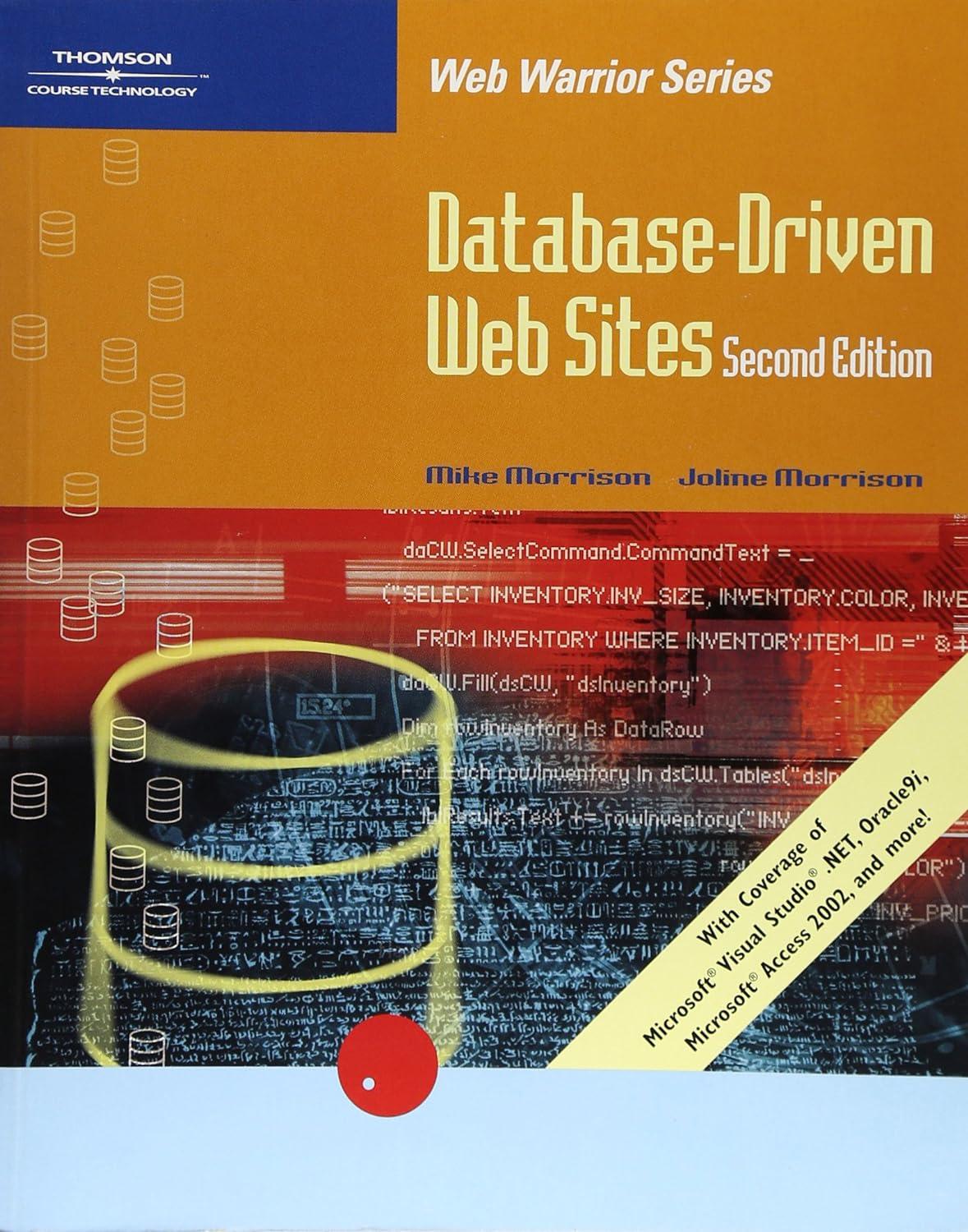Question
Prove by the smallest counter-example that the following statement P(n) is true. 11 n 6 is divisible by 5 for every positive integer n. You
Prove by the smallest counter-example that the following statement P(n) is true.
11n 6 is divisible by 5 for every positive integer n.
You need to include the following steps:
1. Express P(n) as a universal statement using symbols.
2. Express the opposite assumption as an existential statement.
3. Check if P(n) holds for the lower bound of the universe.
4. If P(n) holds for the lower bound of the universe, based upon bullet 2, there must be some values that make P false and we can pick the smallest counter value m. What will be the value range 'R' in the universe that we know for sure will make P(n) hold? What is the largest value in this range?
5. Prove that when the largest value in the range R makes P true, then the next value after this value also makes P true. This next value is actually the smallest counterexample m that you pick. Therefore, we have both P(m) and P(m), which is a contradiction. Therefore, the original assumption in bullet 2 is false and the original statement should be true. Can you double-check what I have for my answers to make sure that they are correct and accurate??? Here is what I have so far:
1. The statement P(n) can be expressed as:
n , 5 | (11^n - 6)
Also, another way can be P(n): For every positive integer n, 5 | (11^n - 6).
2. The opposite assumption is:
k such that 5 does not divide (11^k - 6)
Also, another way can be P(n): There exists a positive integer k such that 5 does not divide (11^k - 6)
3. Checking P(n) for the lower bound of the universe:
When n=1, 11^n - 6 = 5, which is divisible by 5. Therefore, P(n) holds for the lower bound of the universe.
4. Assume that there exists a smallest counterexample m such that 5 does not divide (11^m - 6). Then, by definition, P(n) holds for all positive integers up to m-1, and P(m) is false.
Since P(m) is false, we have:
11^m - 6 = 5p + r
where p is some integer and r is the remainder when 11^m - 6 is divided by 5, and 0 < r < 5.
Rearranging the equation, we get:
11^m = 5p + r + 6
Since r is a positive integer less than 5, r + 6 is at least 7. Thus, 5p + r + 6 is a multiple of 5 only if r + 6 is a multiple of 5. But r + 6 is greater than or equal to 7, and there is no multiple of 5 between 7 and 11.
Therefore, the assumption that there exists a smallest counterexample m leads to a contradiction. Hence, P(n) holds for all positive integers, and there is no smallest counterexample.
Therefore, the value range R in the universe that we know for sure will make P(n) hold is [1, ), and the largest value in this range is infinity.
5. Since the range R is [1, ), we cannot find the largest value in this range. However, we can show that if P(n) is true for some value n, then P(n+1) is also true.
Assuming that P(n) is true, we have:
(11^n - 6) = 5k, for some integer k.
Adding 11 to both sides, we get:
11^n + 5 = 5k + 11
Factoring the left-hand side, we get:
11(11^(n-1) + 1) = 5k + 11
Since 11 is not divisible by 5, we can conclude that (11^(n-1) + 1) is divisible by 5. Therefore, we can write:
11^(n-1) + 1 = 5j, for some integer j.
Multiplying both sides by 11, we get:
11^n + 11 = 55j
Substituting (11^n - 6) = 5k, we get:
5k + 11 = 55j
Rearranging, we get:
5(k+2) = 55j
Since 5 divides the left-hand side, it must also divide the right-hand side. Therefore, j must be a multiple of 5. So we can write:
j = 5m, for some integer m.
Substituting back, we get:
5(k+2) = 55(5m)
Simplifying, we get:
k+2 = 11m
Since m and k are integers, the left-hand side (k+2) must be divisible by 11. Therefore, we can conclude that P(n+1) is true.
Since we assumed that P(m) is false, and we have shown that P(m+1) is true, this is a contradiction. Therefore, the assumption is that P(m) is false, and the original statement P(n) is true for all positive integers n.
Step by Step Solution
There are 3 Steps involved in it
Step: 1

Get Instant Access to Expert-Tailored Solutions
See step-by-step solutions with expert insights and AI powered tools for academic success
Step: 2

Step: 3

Ace Your Homework with AI
Get the answers you need in no time with our AI-driven, step-by-step assistance
Get Started


